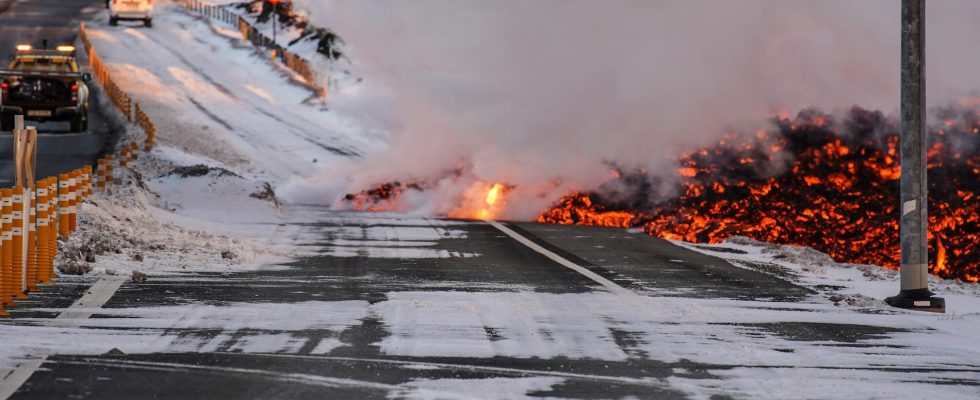unsaveSave
Lava on the road to Grindavík, near the entrance to the Blue Lagoon swimming pool.
1 / 3Photo: Marco Di Marco/AP/TT
A new volcanic eruption at Iceland’s Sýlingarfell is visible from Keflavik Airport. The world-famous Blue Lagoon is vacated.
Both the water and electricity supplies in the area are threatened and a local state of emergency has been declared.
The first warnings about the eruption came at 05:20 on Thursday. Lava reached the ground about half an hour later.
The new outbreak was expected and is the third in a short time. A total of six eruptions have occurred in the area in three years.
The crack three kilometers long
The Icelandic weather institute, Vedurstofa Islands, writes on its website that the coast guard flew over the lava flow, which occurred in the same place as an eruption on December 18. The fissure is about three kilometers long and the lava flows west. The lava flow is estimated to have been somewhat smaller than during the eruption in December.
The eruption was visible from the Keflavik major airport close to 30 kilometers away. The lava at the eruption site has been thrown nearly 80 meters into the air and the smoke reaches a height of 3,000 meters.
The swimming facility Blå lagunen is closer than that, and was evacuated. The lava has also reached a road leading up to the facility.
The hot water supply to parts of the peninsula is now cut off. The lava has destroyed a hot water pipeline and it is unclear when the area will be able to regain full water supply. The authorities have therefore declared a local state of emergency in the area.
Even a power line is threatened and there is a certain risk that the electricity will also be interrupted.
A road near the Svartsengi power plant has been closed.
The Icelandic professor of volcanology, Ármann Höskuldsson, estimates in the newspaper Morgunbladid that the eruption will last up to four days. He also says that the intensity is strongest in the first hours but that it then subsides.
FACT Volcanic Iceland
The boundary between the North American and Eurasian continental plates runs right through Iceland.
The location means that Iceland has an extremely high amount of geological activity. For example, a volcanic eruption in the 18th century led to the death of a quarter of the population.
Most of the time, however, the eruptions are minor, and do not cause major consequences if they occur in sparsely populated, mountainous parts of the country. But modern society is sensitive in new ways – when Eyjafjallajökull on Iceland’s south coast spewed ash over Europe in the spring of 2010, air traffic was disrupted for up to several weeks.
Read more
